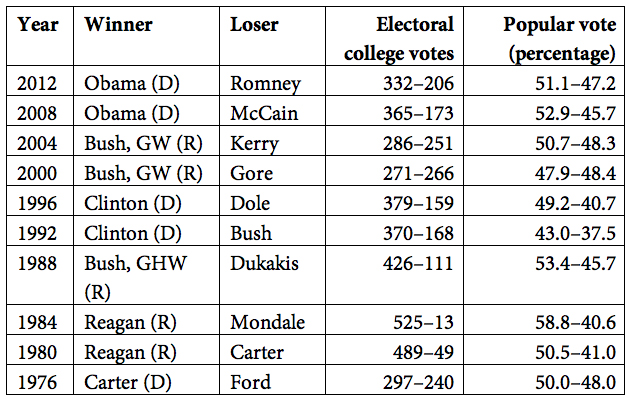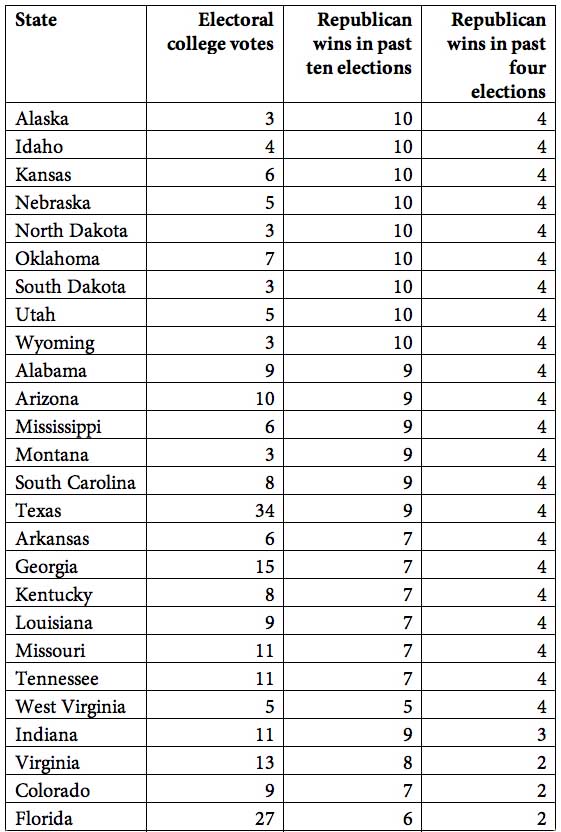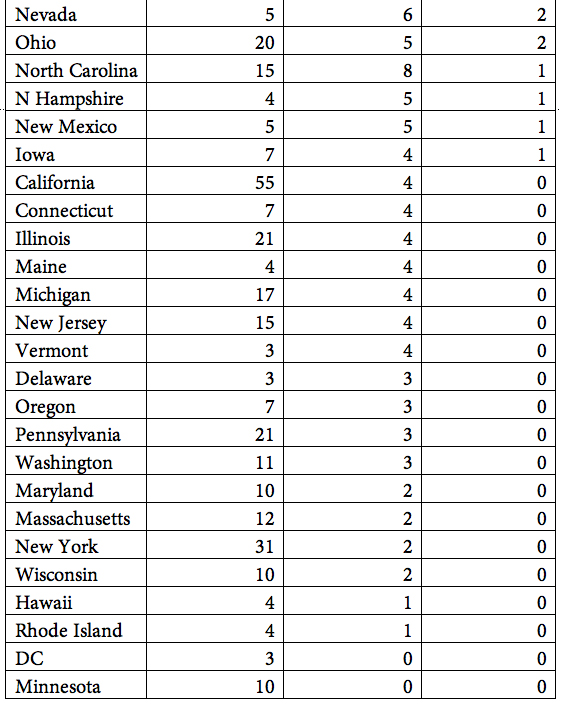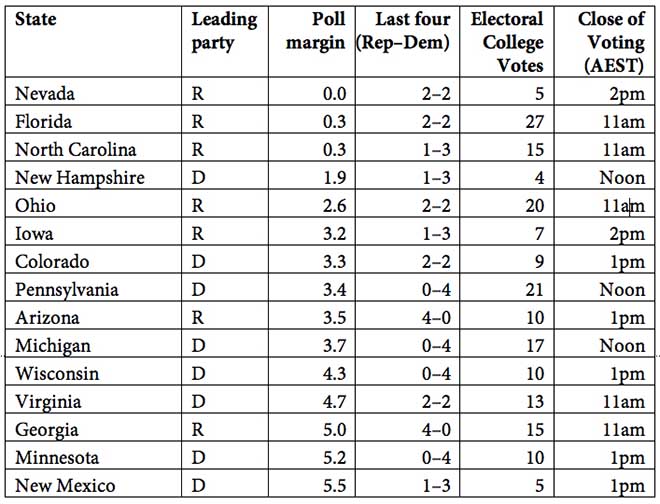As large numbers of Americans anxiously watch the US presidential count this Wednesday, Sydney time, many Australians will be sharing their feelings. Like them, we’ve looked on with fascinated horror as the Trump candidacy has unfolded over the past year. And now a tightening of the polls has created a growing fear that the unthinkable could happen. How quickly will the result become apparent?
Let’s begin with some background. As Table 1 shows, five of the last ten presidential elections have been won by the Democrats and five by the Republicans. Bear in mind two critical things when you’re looking at that table.
First, US presidential elections use a first-past-the-post system. The two major-party candidates might get the vast majority of votes, but they don’t get all of them. The gap varies according to the support gained by third-party candidates, whose main electoral significance is their potential to deprive one of the major-party candidates of votes that would otherwise have got him or her across the line.
The two most important third-party candidacies were in 1980 and 1992. In the first case, ex-Republican John Anderson probably took more votes from Jimmy Carter than from Ronald Reagan, thus contributing to the latter’s victory. In 1992, it’s clear that billionaire Ross Perot’s candidacy helped Bill Clinton to defeat George H.W. Bush.
Second, the result is determined by the Electoral College rather than by the popular vote. Each state is allocated a number of Electoral College votes, broadly on the basis of population, and the winner of the popular vote gets all of them. (The exceptions are Maine and Nebraska, which each allocate college votes according to the proportion of popular votes that went to each candidate.) With 538 votes in the Electoral College, a candidate needs 270 to become president. The most sweeping Electoral College victories in recent history were the two Reagan victories in the 1980s.
But the Electoral College outcome might not reflect the popular vote. Only once in recent history has that occurred: Al Gore secured half a million more votes than George W. Bush in 2000, yet he narrowly lost in the Electoral College. The initial count of popular votes had given Bush a very narrow win in Florida, which meant he secured all twenty-seven Electoral College votes. After heated disagreement about the accuracy of the count, the Supreme Court ruled against conducting a recount, sealing Bush’s victory.
Table 1: Results of the last ten US presidential elections

Table 2 shows all states ranked (in descending order) according to how consistently they have supported the Republican candidate over the past four elections. Its most notable feature is the stability of state-by-state support for each party. Twenty-two states, totalling 174 Electoral College votes, have supported the Republicans in the last four presidential elections. Nineteen states and the District of Columbia, or 248 votes, have gone Democrat each time. This leaves just ten states that have produced majorities for both parties.
Stability is also evident in the number of states that have gone for the same party in almost all of the past ten elections. From election to election, the electoral appeal of individual candidates has naturally had an impact; in the medium term, changes in a state’s demography or economics have shifted support in some states. California, once a swing state, has become consistently Democrat. Virginia has gone from predictably Republican to more finely balanced. And other states, such as West Virginia, have moved more strongly into the Republican orbit.
Table 2: US presidential results by state
Ordered according to Republican victories over the past four elections


Not surprisingly, the parties concentrate their campaigning efforts on the “battleground states.” FiveThirtyEight, whose creator Nate Silver achieved fame by correctly forecasting the result in each state in 2012, currently gives Clinton a solid 64.9 per cent chance of winning, although this is down significantly from the 80 per cent–plus it calculated just a few weeks ago.
FiveThirtyEight has also aggregated the polls for each state. Table 3 lists the fifteen closest states – those with margins of 5.5 per cent or less – in order of tightness. It includes all the states that have voted different ways in the past four elections, except for Indiana, which is now solidly back in the Republican camp. It also includes two states that have recently been Republican and four that have been consistently Democratic in the recent past. Some of the latter are in the rustbelt region, where Trump’s populist appeals resonate in the face of economic stagnation.
Table 3: Battleground states

If Trump won all the states in which he is currently ahead, Clinton would still prevail, though narrowly, with 279 votes. American pollsters have come up with a wide spread of findings (though a convergence around a Clinton lead of 2 to 3 per cent is emerging), and much depends on turnout on election day, so it would be risky to play down the uncertainty. For Trump to close the gap, he must take states in which the Democrats are currently ahead, with Colorado and Pennsylvania perhaps the key.
In five of the six closest contests in Table 3, the Republicans are currently in the lead, and they would need to hold all of these to have any chance of winning. A clue should come early. Because of the time differences, polling booths close in the eastern states at 11am Australian eastern daylight savings time, with the western states (mostly Democratic strongholds) not closing until 3pm. Five of the battleground states are in the eastern time zone; if Clinton wins any of the three biggest and closest (Florida, North Carolina and Ohio) it’s likely that she will go on to win. If Trump wins them all, the count will become tense indeed. •




